Using Hasura Cloud with a Yugabyte Postgres Database
Introduction
This guide explains how to connect a new or existing Yugabyte Postgres database to a Hasura Cloud project. If you're exploring Yugabyte Postgres and are interested in migrating an existing Postgres database - such as from Heroku - check out their docs before continuing below.
Step 1: Sign up or log in to Hasura Cloud
Navigate to Hasura Cloud and sign up or log in.
Step 2: Create a Hasura Cloud project
On the Hasura Cloud dashboard, create a new project:
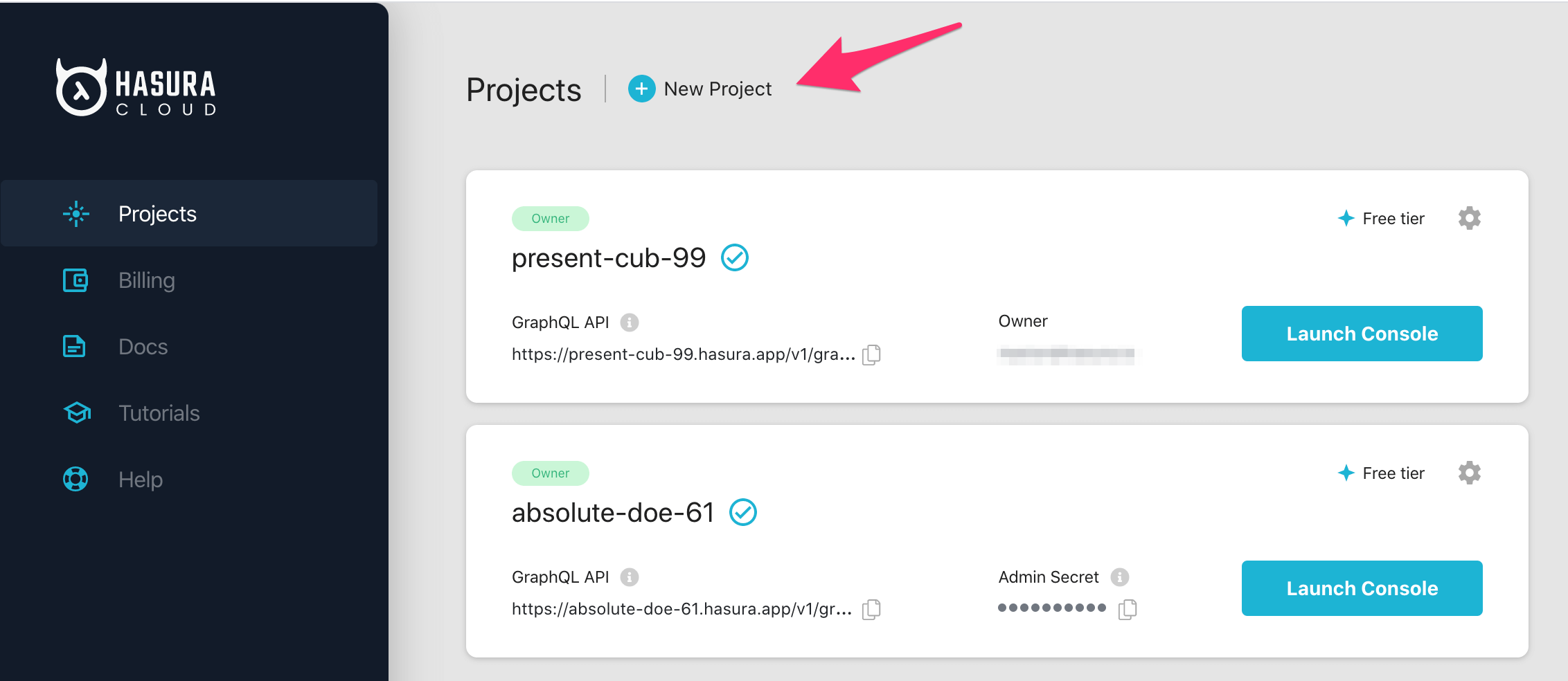
You will get prompted for a Postgres Database URL. We will create this in the next step and then come back here.
After the project is initialized successfully, click on Launch console to open the Hasura console in your browser.
On the Hasura console, navigate to Data -> Manage -> Connect Database -> Connect existing database:
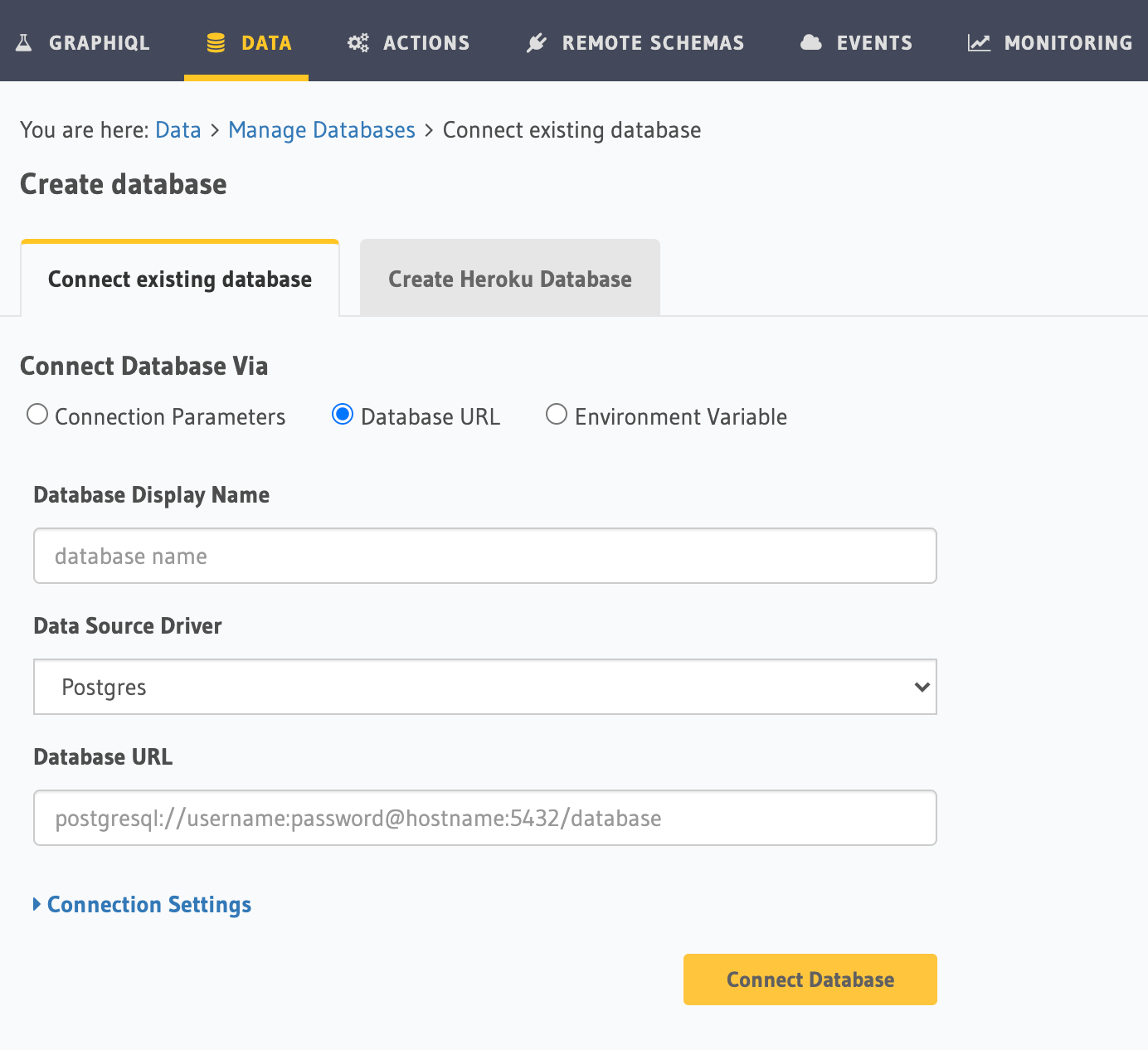
Step 3: Create a Postgres DB on Yugabyte (skip if you have an existing DB)
Log into the Yugabyte Cloud dashboard.
On the Yugabyte Cloud dashboard, click on Create a free cluster:
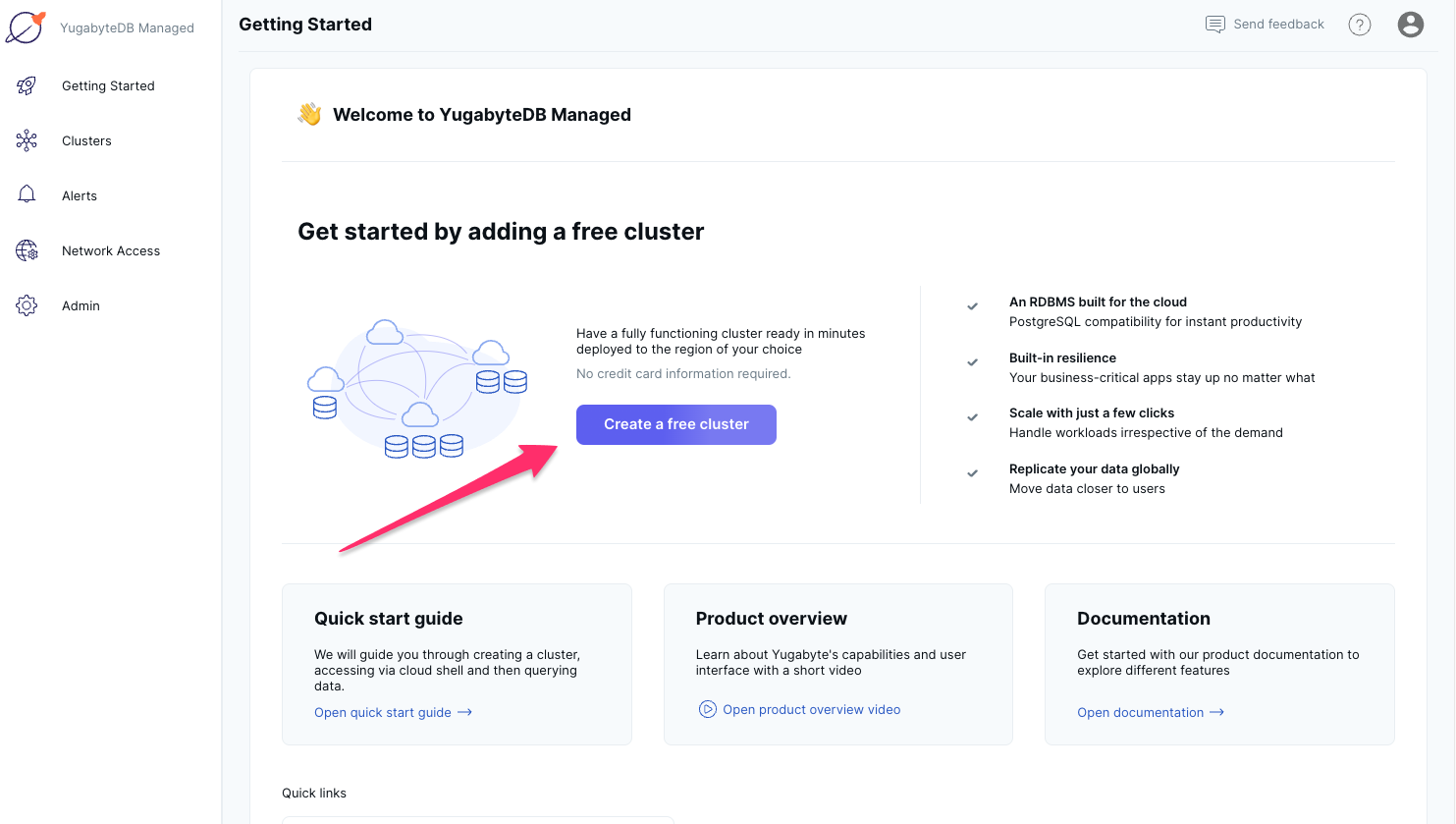
Select the Managed Free option and then click Next.
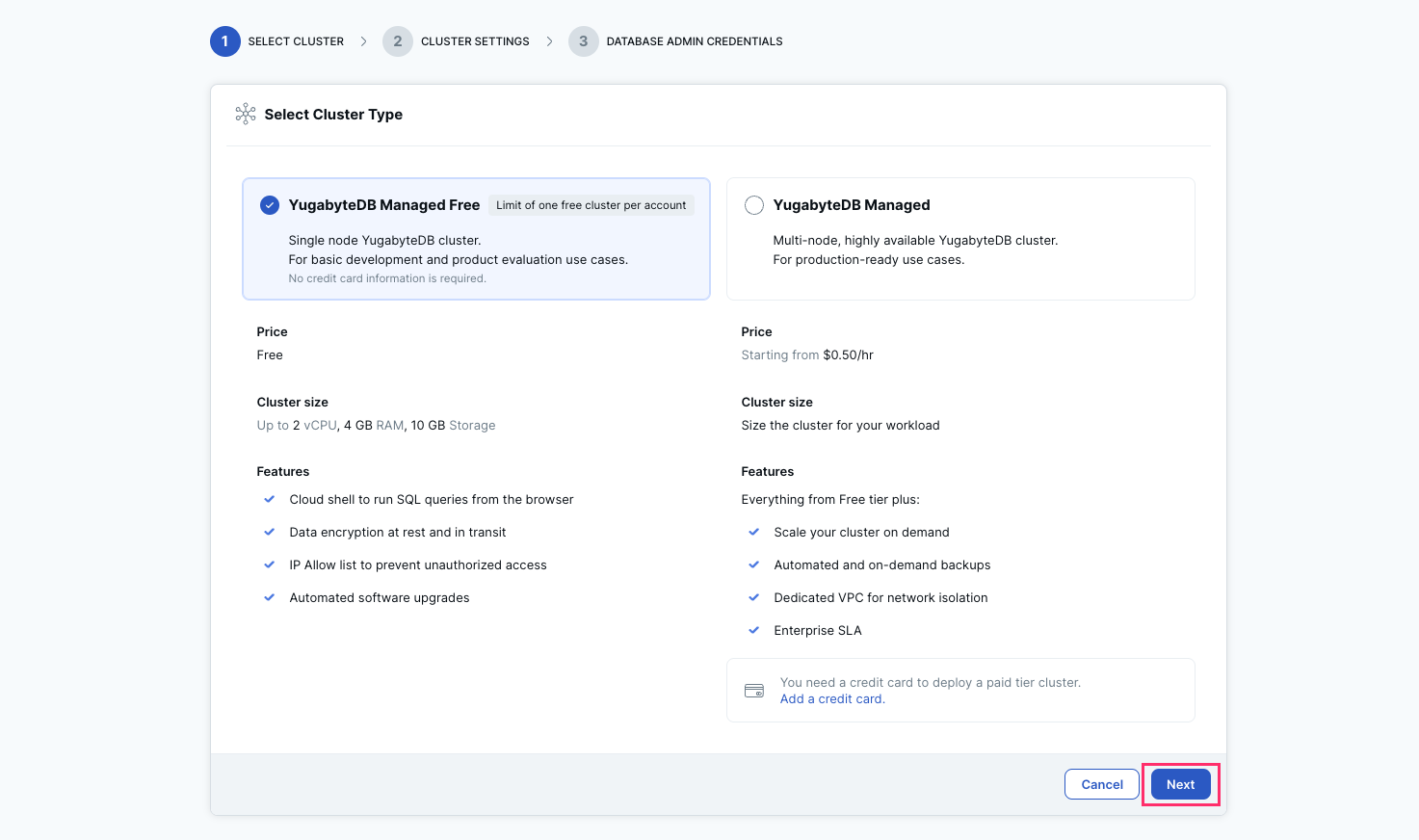
Select a Cloud Provider and Region and then click Next.
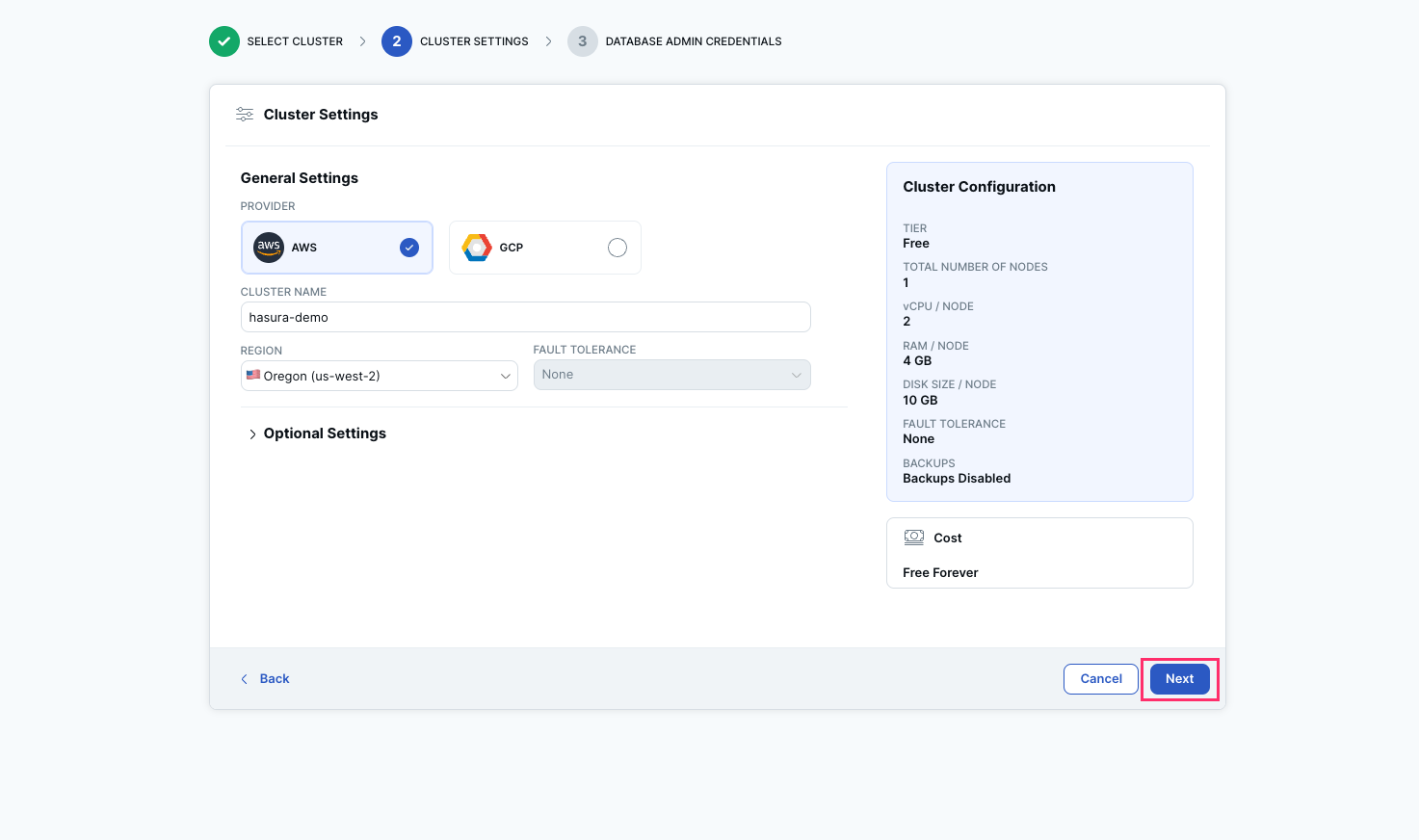
If you're using a database user other than the default one, make sure to give it the right Postgres permissions.
Download your credentials and then click Create Cluster.
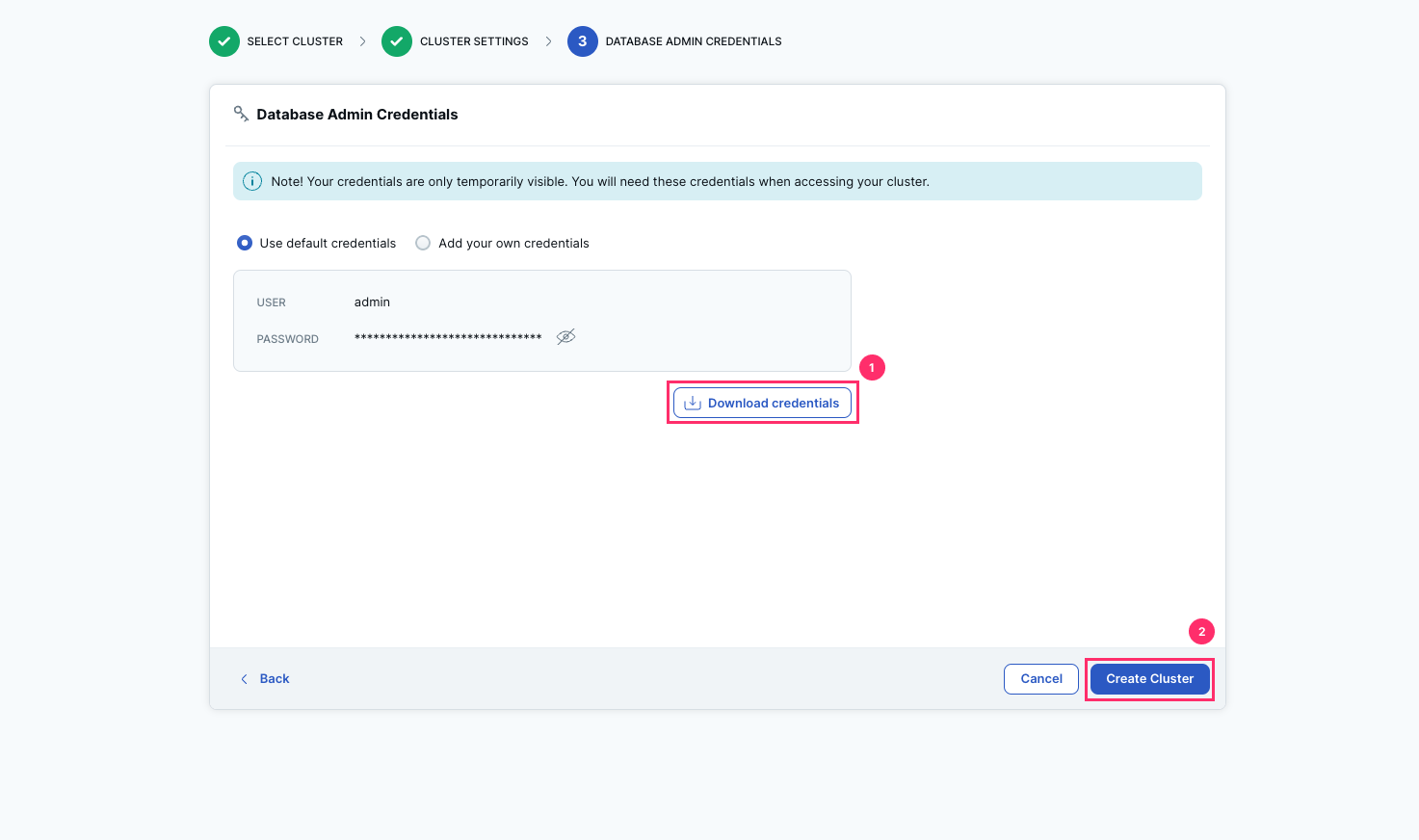
Step 4: Allow connections to your DB from Hasura Cloud
From the cluster's dashboard, click Add IP Allow List:
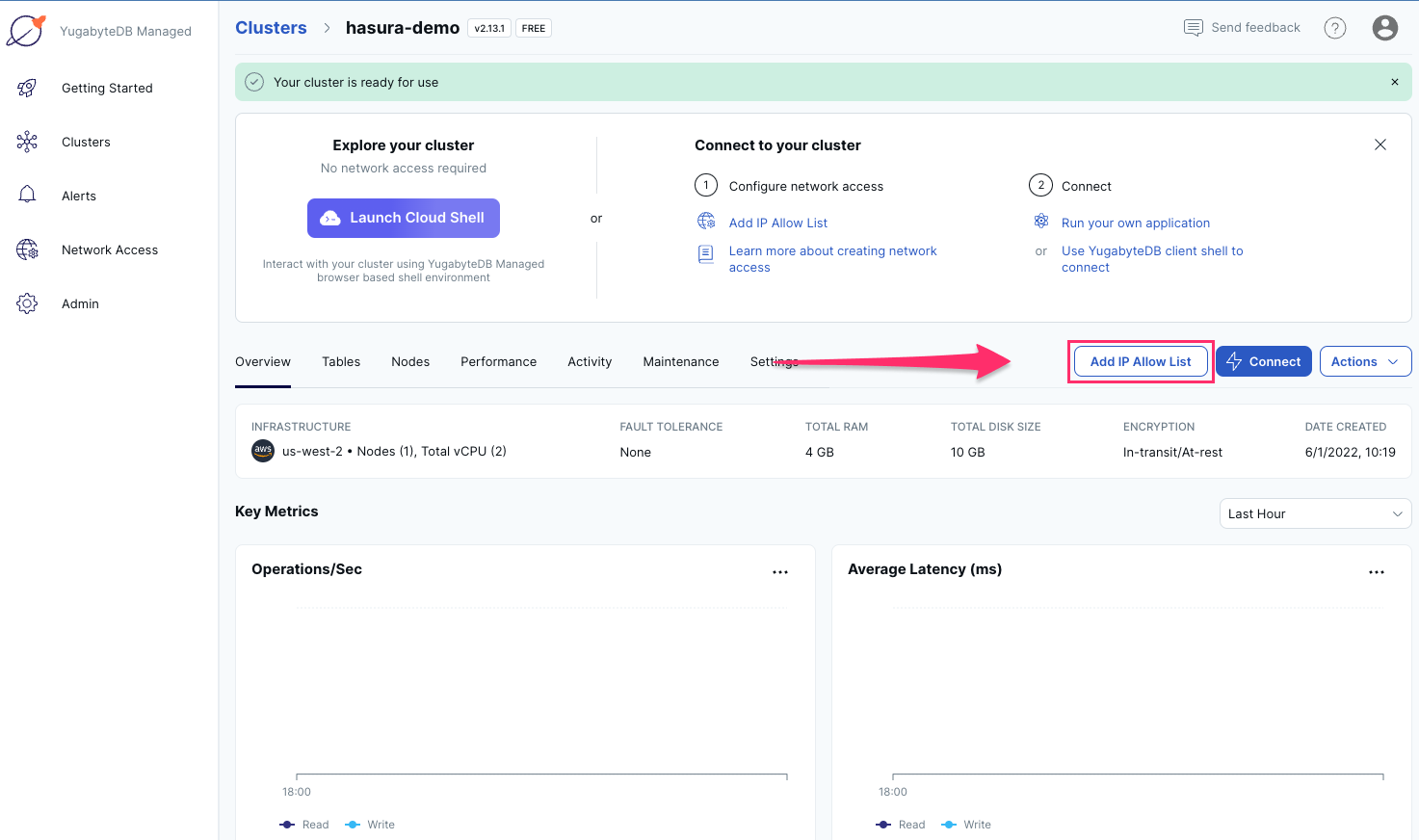
Within the modal, click Create New List and Add to Cluster:
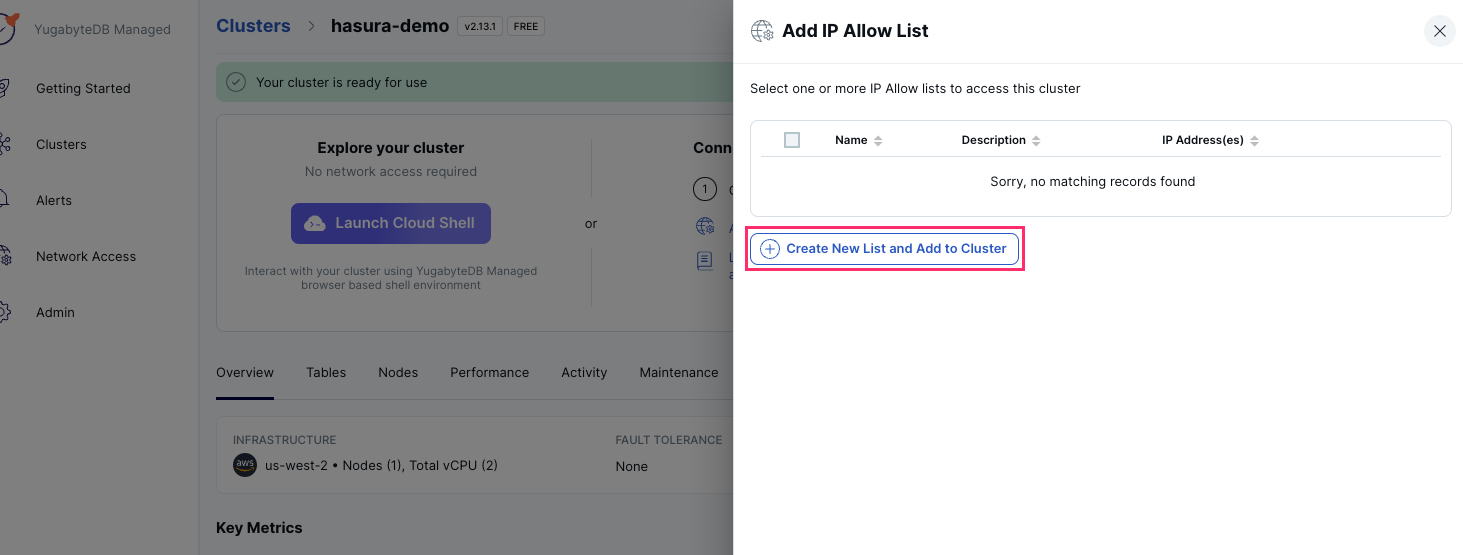
Copy the IP address from the copy icon in the Hasura Cloud IP field on the project's details view on Hasura Cloud.
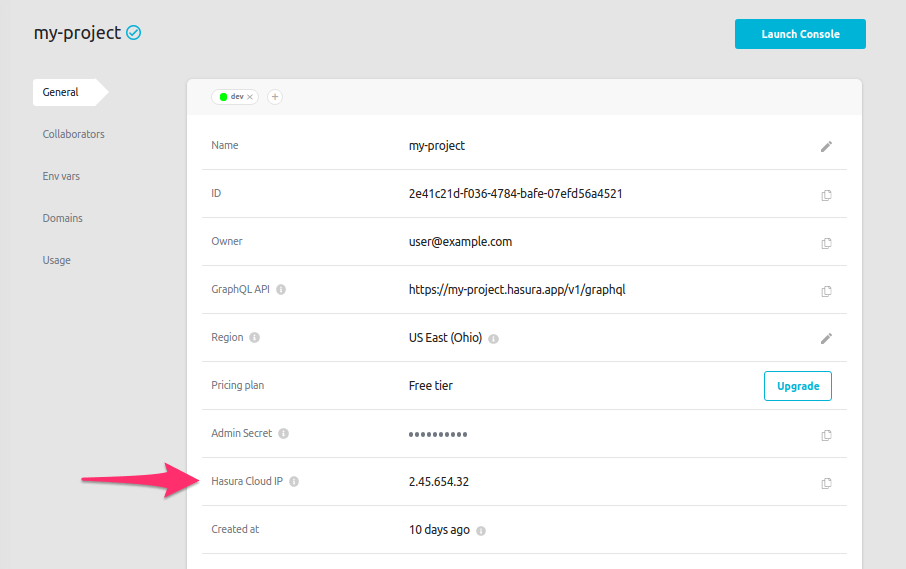
Enter the Hasura IP address that you copied:
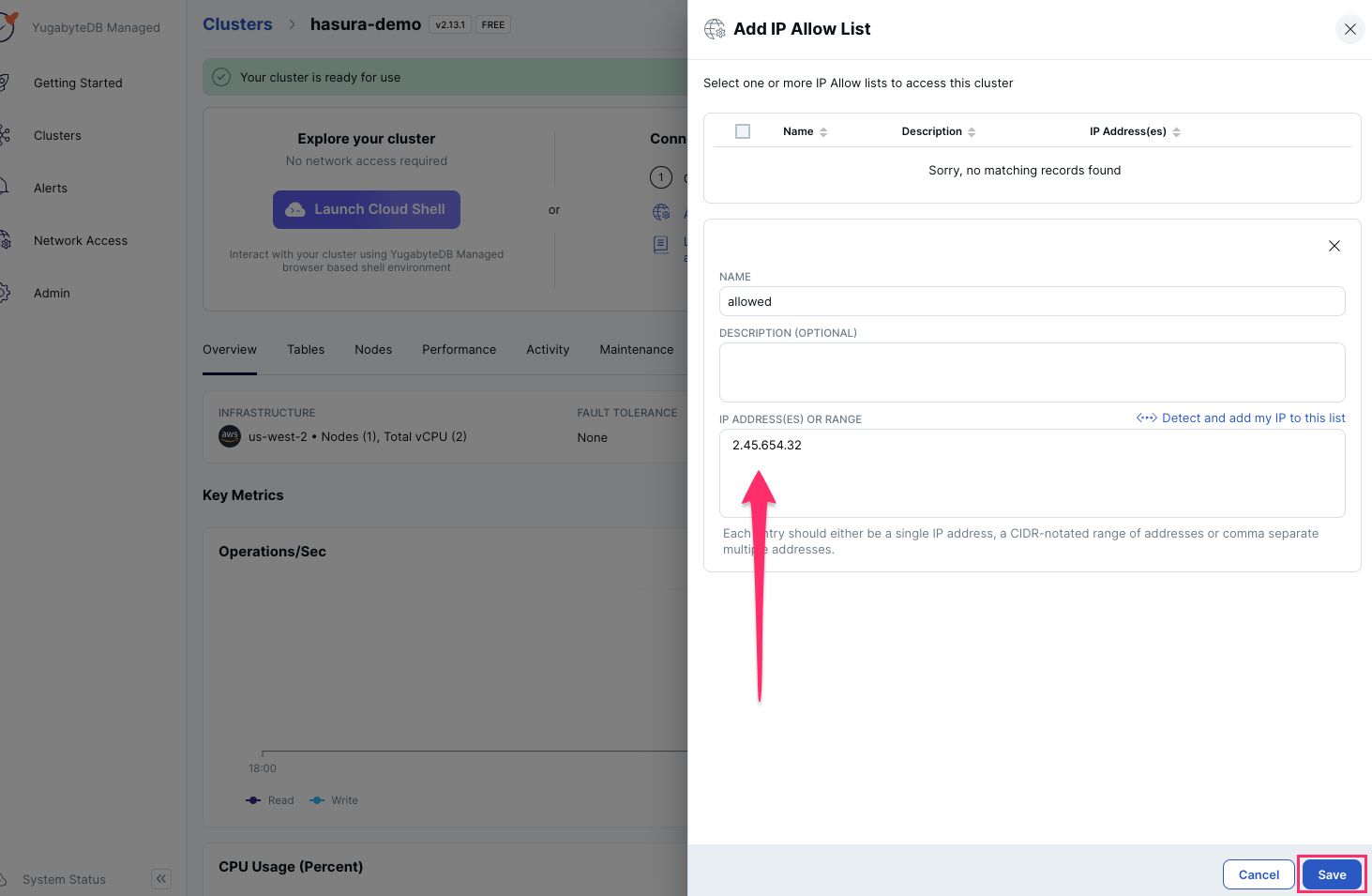
Then click Save.
Step 5: Construct the database connection URL
The structure of the database connection URL looks as follows:
postgresql://<user-name>:<password>@<public-ip>:<postgres-port>/<db>?ssl=true&sslmode=require
To get it, from the cluster's dashboard, click Run your own application:
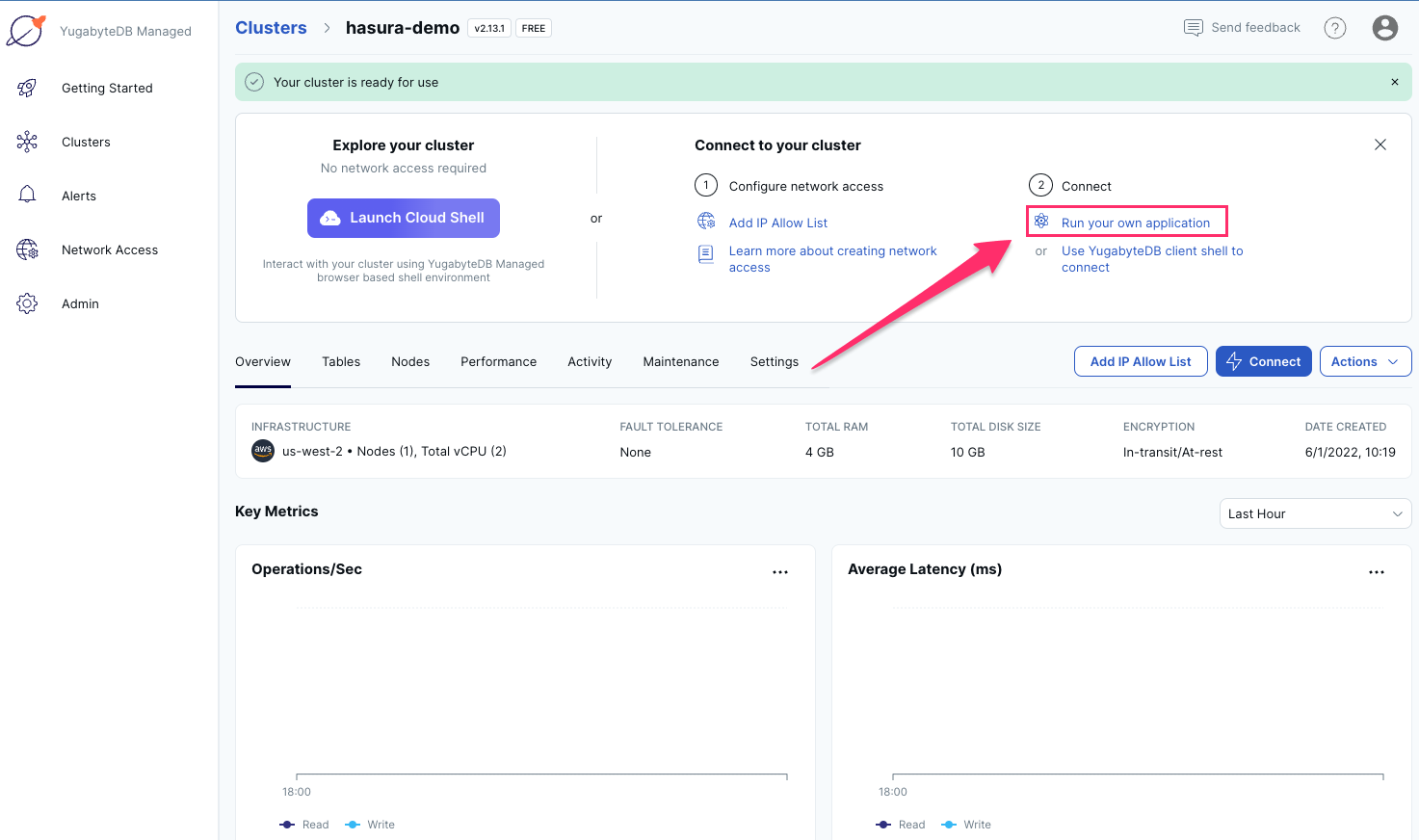
Click the Optimize for Hasura Cloud checkbox and then copy your connection string:
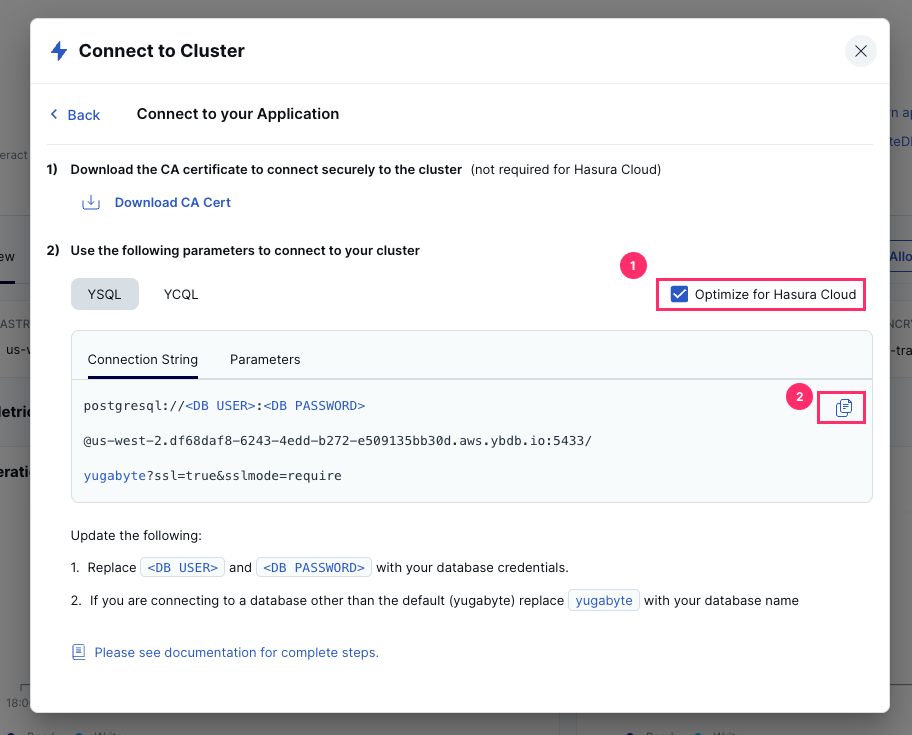
Step 6: Finish connecting the database
Back on the Hasura Console, enter the database URL that we just copied and replace the <DB USER> and <DB PASSWORD>
with the information from your credentials downloaded in step 3:
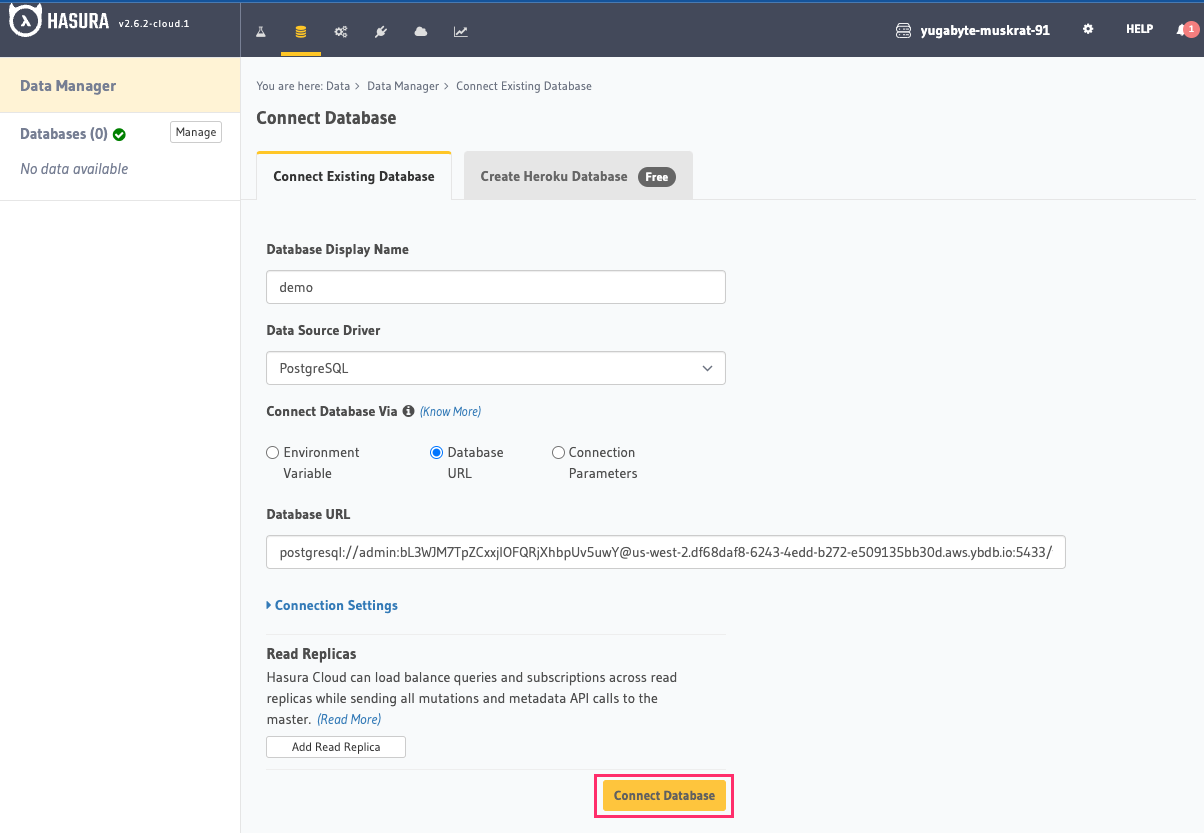
Then click Connect Database.
For security reasons, it is recommended to set database URLs as env vars and using the env vars to connect to the databases in place of the raw database URLs.
Voilà. You are ready to start developing.
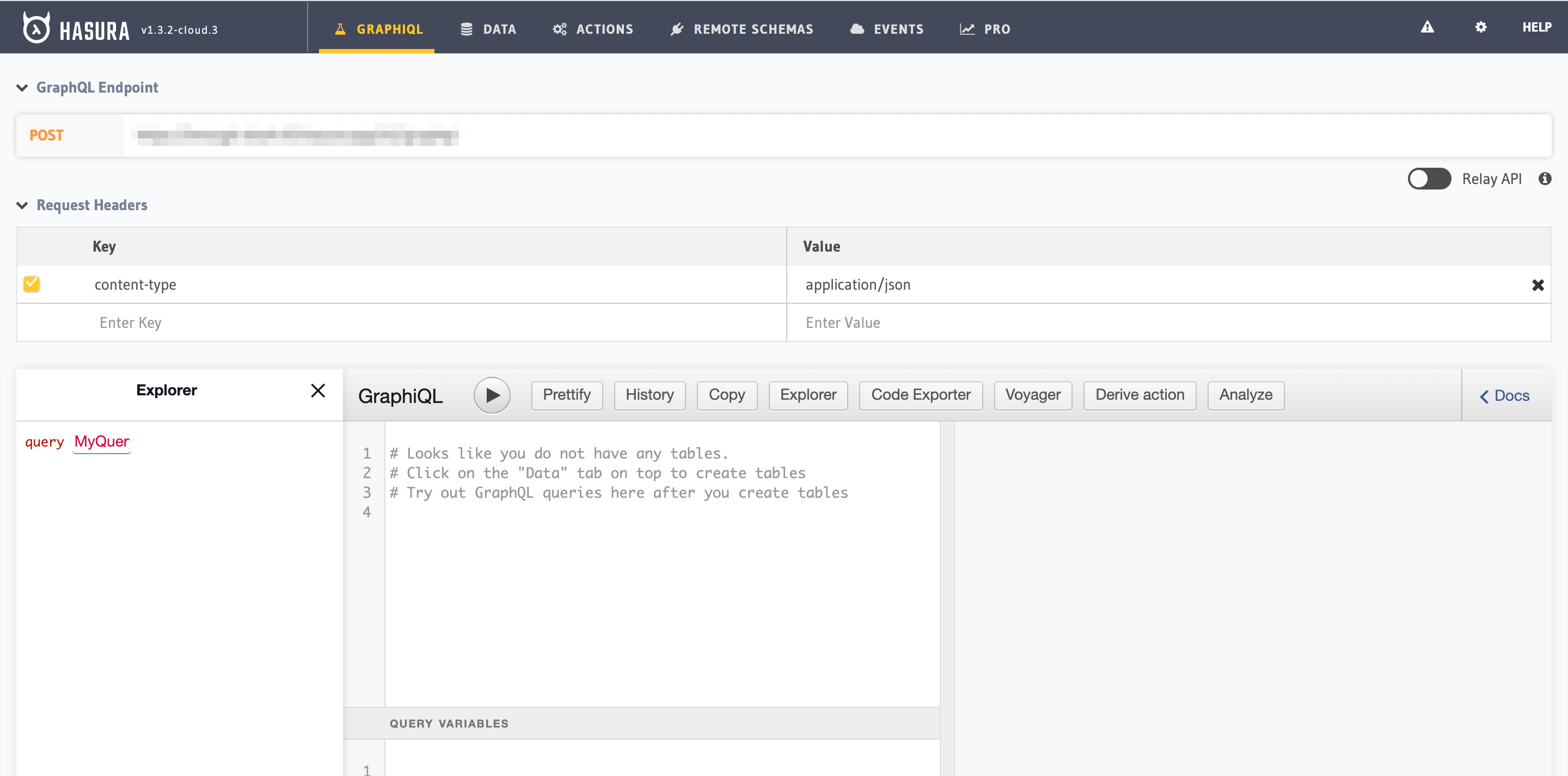
Next steps
You can check out our 30-Minute Hasura Basics Course and other GraphQL & Hasura Courses for a more detailed introduction to Hasura. If you're completely new to Yugabyte and want to learn more, check out this tutorial from our Learn site.
You can also click the gear icon to manage your Hasura Cloud project. (e.g. add collaborators, env vars or custom domains).

For more information on which Postgres features we support, check out this page!

